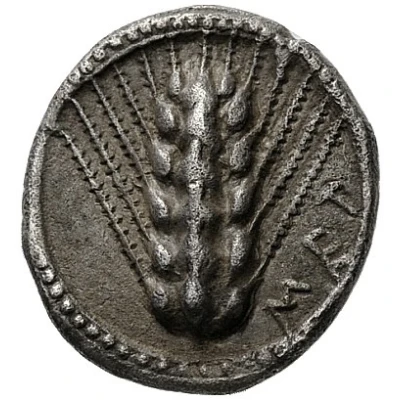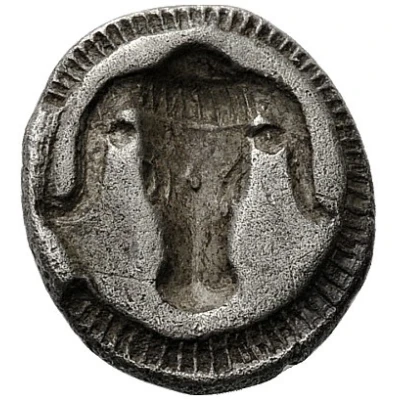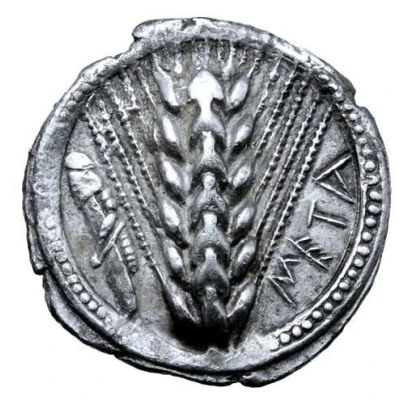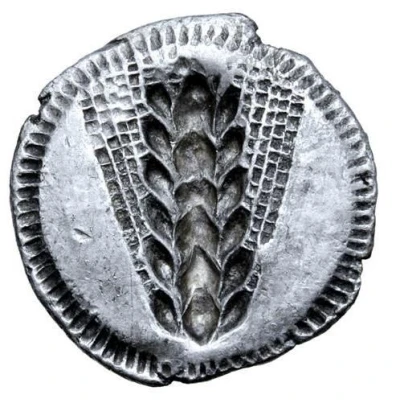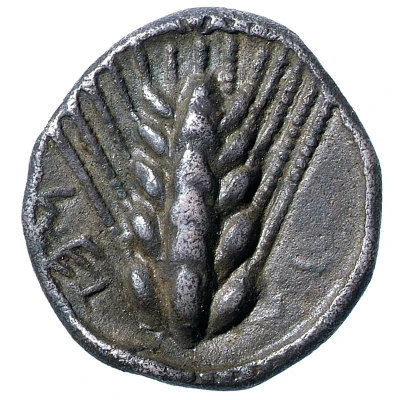
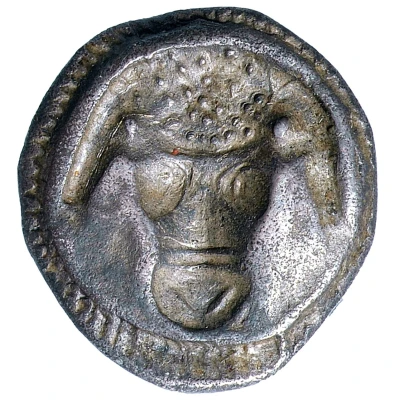

© Trustees of the British Museum
Triobol 470 BC - 440 BC
| Silver | 1.24 g | - |
| Issuer | Metapontion (Lucania) |
|---|---|
| Type | Standard circulation coin |
| Years | 470 BC - 440 BC |
| Value | Triobol (½) |
| Currency | Drachm (540-200BC) |
| Composition | Silver |
| Weight | 1.24 g |
| Shape | Round (irregular) |
| Technique | Hammered, Incuse |
| Demonetized | Yes |
| Updated | 2024-10-10 |
| Numista | N#384217 |
|---|---|
| Rarity index | 100% |
Reverse
Bull’s head incuse.
Interesting fact
The Triobol coin was used as a form of currency in the ancient Greek city of Metapontion, located in the region of Lucania (modern-day Basilicata), and was minted during the 5th century BC. Despite its small weight of 1.24 grams, the Triobol was a valuable coin in its time and was widely used for trade and commerce. Its design featured the image of a youthful male figure, known as a kouros, on one side, and a quadriga (a chariot pulled by four horses) on the other. The coin's unique design and historical significance make it a highly sought-after collector's item among numismatists today.
